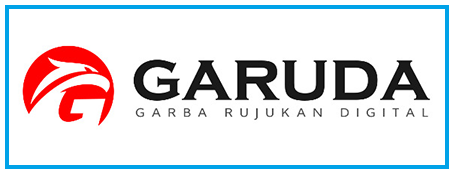PERSEPSI MAHASISWA S1 FARMASI TERHADAP PEMBELAJARAN DARING DAN LURING DI LINGKUNGAN STIKES NOTOKUSUMO
Keywords:
Persepsi Mahasiswa, luring, Daring, Stikes NotokusumoAbstract
Saat masa pandemi Covid-19 terlalui, telah terjadi peta perubahan pembelajaran di lingkungan akademik termasuk di lingkungan Stikes Notokusumo. Pembelajaran secara online atau daring sampai saat sekarang ini masih menjadi metode yang diimplementasikan di lingkungan Stikes Notokusumo sebagai salah satu alternatif metode selain metode pembelajaran secara luring. Penelitian ini bertujuan untuk mengidentifikasi persepsi dari mahasiswa terhadap pembelajaran secara daring dibandingkan dengan pembelajaran secara luring atau tatap muka di lingkungan Stikes Notokusumo. Adapun aspek yang dibandingkan dalam penelitian ini adalah aspek kerangka pembelajaran yang mencakup kedalaman materi, kelengkapan, kenyamanan, fleksibilitas dan durasi dari pembelajaran secara daring maupun luring. Metode penelitian kualitatif dengan menggunakan teknik snowball sampling telah digunakan pada penelitian ini untuk memilih partisipan yang terdiri dari sepuluh mahasiswa yaitu mahasiswa semester tiga dan lima Prodi Strata Satu Farmasi Stikes Notokusumo. Para mahasiswa disuguhi beberapa pertanyaan terkait pengalaman mereka dalam mengikuti pembelajaran daring maupun luring. Hasil penelitian menunjukkan bahwa faktor kepuasan dan kenyamanan belajar sebagian besar mahasiswa masih ditentukan oleh adanya keberadaan interaksi antara dosen dengan mahasiswa dalam metode pembelajaran luring. Mahasiswa juga lebih menyukai pembelajaran luring karena dapat lebih mudah berkomunikasi, memahami materi, fokus, dan aktif dalam pembelajaran. Kesimpulan yang didapatkan adalah pembelajaran luring (offline) atau tatap muka lebih dipilih oleh sebagian besar mahasiswa Prodi Farmasi Stikes Notokusumo dibanding pembelajaran secara online atau daring
Downloads
References
Al-Alami, Z. M., Adwan, S. W., & Alsous, M., 2022, Remote learning during Covid-19 lockdown: A study on anatomy and histology education for pharmacy students in Jordan, Anatomical Sciences Education, 15(2): 249–260, doi: 10.1002/ase.2165.
Allen, M., Bourhis, J., Burrell, N., Mabry, E., 2002, Comparing Student Satisfaction With Distance Education to Traditional Classrooms in Higher Education: A Meta-Analysis, The American Journal of Distance Education, 16: 83–97, doi:10.1207/S15389286AJDE1602_3.
An, Y. J., & Frick, T. W., 2001, Blended instruction: Student perceptions of communications technology in face-to-face courses, Age, 18(20): 19-0.
Baber, H., 2020, Determinants of Students’ Perceived Learning Outcome and Satisfaction in Online Learning during the Pandemic of COVID-19, Journal of Education and e-Learning Research, 7: 285-292, doi:10.20448/journal.509.2020.73.285.292.
Bediang, G., Stoll, B., Geissbuhler, A., Klohn, A. M., Stuckelberger, A., Nko’O, S., & Chastonay, P., 2013, Computer literacy and E-learning perception in Cameroon: The case of Yaounde Faculty of Medicine and Biomedical Sciences, BMC Medical Education, 13(1), doi:10.1186/1472-6920-13-57.
Cernasev, A., Desai, M., Jonkman, L. J., Connor, S. E., Ware, N., Sekar, M. C., & Schommer, J. C., 2021, Student Pharmacists during the Pandemic: Development of a COVID-19 Knowledge, Attitudes, and Practices (COVKAP) Survey, Pharmacy, 9(4), doi:10.3390/pharmacy9040159.
Morgan, D. L., 2013, The SAGE Encyclopedia of Qualitative Research Methods: Theoretical Frameworks, The SAGE Encyclopedia of Qualitative Research Methods.
Derakhshan, A., Salehi, D. and Rahimzadeh, M., 2015, Computer-Assisted Language Learning (Call): Pedagogical Pros and Cons, International Journal of English Language and Literature Studies, 4, pp. 111–120, doi:10.18488/journal.23/2015.4.3/23.3.111.120.
Dobson J. L., 2009, Learning style preferences and course performance in an undergraduate physiology class, Advances in physiology education, 33(4): 308–314, doi:10.1152/advan.00048.2009.
Fadde, P. J., & Vu, P., 2014, Blended online learning: Benefits, challenges and misconceptions, In Online Learning: Common Misconceptions, Benefits and Challenges. NY: Nova Science Publishers.
Fraenkel, Jack R., & Norman E. Wallen., 2009, How to Design and Evaluate Research in Education,7th edn. New York: McGraw-Hill Companies.
Gamage, K. A. A., Wijesuriya, D. I., Ekanayake, S. Y., Rennie, A. E. W., Lambert, C. G., & Gunawardhana, N., 2020, Online delivery of teaching and laboratory practices: Continuity of university programmes during COVID-19 pandemic, In Education Sciences, 10(10), doi:10.3390/educsci10100291.
Grzych, G., & Schraen-Maschke, S., 2020, Interactive pedagogical tools could be helpful for medical education continuity during COVID-19 outbreak, Annales de Biologie Clinique, 78(4), doi:10.1684/abc.2020.1576.
Hart, C. M. D., Berger, D., Jacob, B., Loeb, S., & Hill, M, 2019, Online Learning, Offline Outcomes: Online Course Taking and High School Student Performance, AERA Open, 5(1), doi:10.1177/2332858419832852.
Kanuka, H., & Anderson, T., 2007, Online Social Interchange, Discord, and Knowledge Construction, International Journal of E-Learning & Distance Education, 13(1): 57-74.
Kohan, N., Soltani Arabshahi, K., Mojtahedzadeh, R., Abbaszadeh, A., Rakhshani, T., & Emami, A., 2017, Self- directed learning barriers in a virtual environment: a qualitative study, Journal of Advances in Medical Education & Professionalism, 5(3): 116-123.
Lewis, R. B., & Maas, S. M., 2007, QDA Miner 2.0: Mixed-model qualitative data analysis software, Field methods, 19(1): 87-108.
Mukhtar, K., Javed, K., Arooj, M., & Sethi, A., 2020, Advantages, limitations and recommendations for online learning during covid-19 pandemic era, Pakistan Journal of Medical Sciences, 36, doi:10.12669/pjms.36.COVID19-S4.2785.
Nasrullah, S., & Khan, M. S., 2015, The Impact of Time Management on the Students’ Academic Achievements, Journal of Literature, Languages and Linguistics, 11: 66-71.
O’Doherty, D., Dromey, M., Lougheed, J., Hannigan, A., Last, J., & McGrath, D., 2018, Barriers and solutions to online learning in medical education - An integrative review. In BMC Medical Education, 18(1), doi:10.1186/s12909-018-1240-0.
Platt, C. A., Raile, A. N.W., & Yu, N., 2014, Virtually the same?: Student perceptions of equivalence of online classes to face-to-face classes, MERLOT Journal of Online Learning and Teaching, 10(3): 489-503.
Puteh, M., Che Ahmad, C.N., Noh, N., Adnan, M., Ibrahim, M.H., 2015, The Classroom Physical Environment and Its Relation to Teaching and Learning Comfort Level, International Journal of Social Science and Humanity, 5:237–240, doi:10.7763/IJSSH.2015.V5.460.
Shahmoradi, L., Changizi, V., Mehraeen, E., Bashiri, A., Jannat, B., & Hosseini, M., 2018, The challenges of E-learning system: Higher educational institutions perspective, Journal of Education and Health Promotion, 7:116, doi:10.4103/jehp.jehp_39_18.
Shih, H.-F., Chen, S.-H., Chen, S.-C., Wey, S.-C., 2013, The Relationship among Tertiary Level EFL Students’ Personality, Online Learning Motivation and Online Learning Satisfaction, Procedia - Social and Behavioral Sciences, 103: 1152–1160, doi:10.1016/j.sbspro.2013.10.442.
Zainuddin, Z., 2015, Exploring The Potential of Blended Learning and Management System For Higher Education in Aceh, Englisia Journal of Language, Education, and Humanities, 2(2): 70-85, doi:10.22373/ej.v2i2.287.
Zhong, X., 2015, Development and application of an offline learning system in college teaching, International Journal of Emerging Technologies in Learning, 10(5), doi:10.3991/ijet.v10i5.4794.
Downloads
Published
How to Cite
Issue
Section
License
Copyright (c) 2023 SENTRI: Jurnal Riset Ilmiah

This work is licensed under a Creative Commons Attribution-NonCommercial-ShareAlike 4.0 International License.









